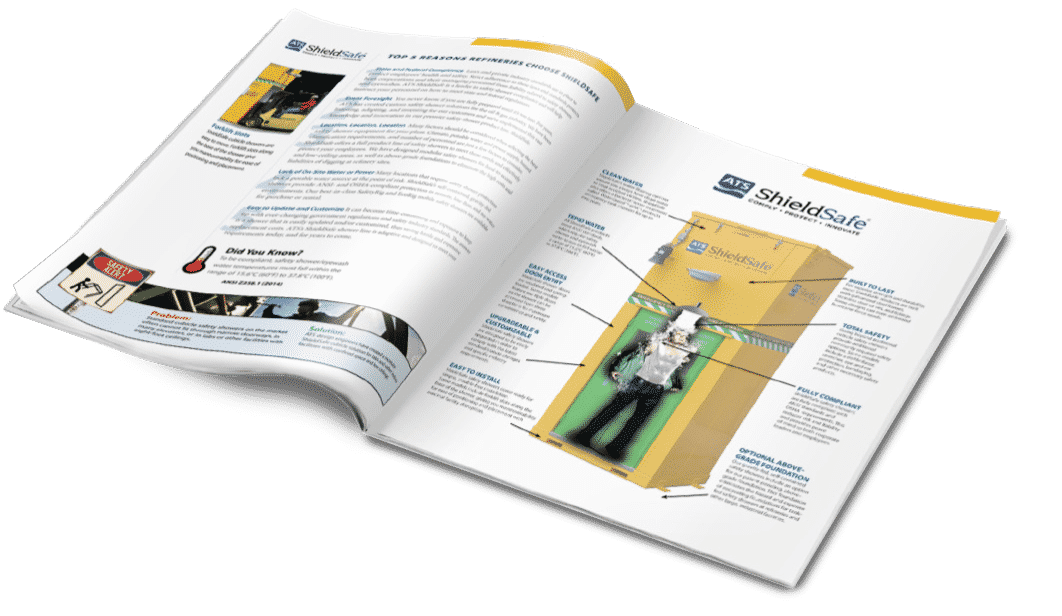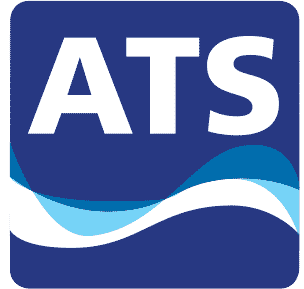
Safety Shower OSHA Violation Penalties
ANSI standards keep changing, so if your safety shower/eyewash unit is older than 2014, you may want to check the newest ANSI Z358.1 2014 standards. For the first time since 1993, OSHA penalties substantially increased, by as much as 80% since 2016 in all OSHA-regulated states. These stiff penalties do severe damage to your bottom line, not to mention resulting in workers’ compromised safety if they undergo an emergency on the job site.
OSHA defines serious violations as “when the workplace hazard could cause an accident or illness that would most likely result in death or serious physical harm.” This assumes the employer did not take corrective action, even though they were aware of the violation. A fine of thousands of dollars is likely in penalties – it’s that serious. For repeat violations, the fine doubles or even triples, if you don’t correct violations the first time.

Most Common Safety Shower Non-compliance ANSI Standards Checklist
Without further ado, here is a list of the top safety shower non-compliance ANSI Z358.1 2014 issues found.
- Providing the improper equipment for the application – you should have an eye/face wash or combination shower onsite, instead of just an eyewash, which could reduce the unit’s effectiveness for you.
- Improper installation of eyewash nozzles, actuators, and showerheads – wrong placement or incorrect assembly could result in an ineffective emergency response, which could cause further injury.
- Dysfunctional parts of a unit, including the pull rod or push flag, therefore creating a situation where a victim can’t use the equipment when needed; it could also worsen the emergency.
- Inconsistent or unpredictable water flow, or lack of flow control to the eye or eye/face wash – according to practicing ophthalmologists, comfortable water pressure is vital to ensure victim can flush their eyes for the full 15 minutes recommended. This pertains to showerheads as well.
- Water pressure or flow rate insufficiency – without the proper rate flow, the shower/eyewash unit is unusable; thus, you can’t rely on the equipment.
- Uneven flow patterns – if there’s not an even flow rate to flush both eyes simultaneously, this is considered a non-compliance issue.
- Water temperature to hot or too cold – this is crucial to ensure victims can stay under for the allotted time; tepid water of 60°-100° is optimal.
- Not maintaining correct flow rates when shower and eyewash are activated – the inability of equipment to sustain required flow rates is the most common non-compliant safety shower/eyewash unit issue.
- Incorrect alignment – if the showerhead is not in alignment with the eye/face wash and vice versa in a combination unit, it doesn’t allow for a simultaneous shower or eyewash use.
- A lack of proper signage on the equipment or lack of available lighting can be a problem – although this doesn’t affect the unit’s performance ability, it can prevent you from locating the shower or eyewash during an emergency.
This by no means is the complete list, so it’s wise to visit the OSHA site to learn about the exhaustive list of non-compliance items.
ATS Ensures ANSI Compliance in ALL Safety Showers
For ultimate worker safety, ensuring you have a full ANSI compliant safety shower/eyewash unit is essential to peace of mind if an emergency occurs. You can count on ATS Safety showers to be in full accordance with ANSI. We have many options in which to choose, from mobile showers to enclosed ones that can withstand hurricane-force winds. Contact our customer representatives today to learn more about our built-to-last safety showers! You can reach us at 800.747.9953.


